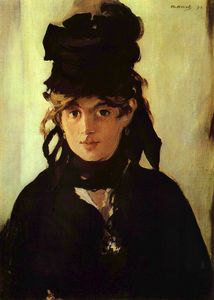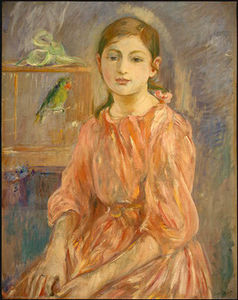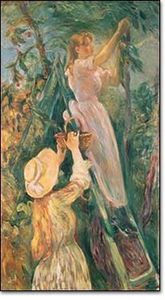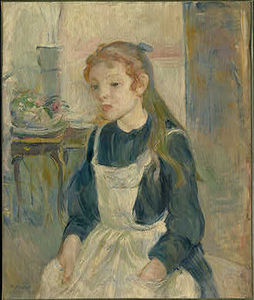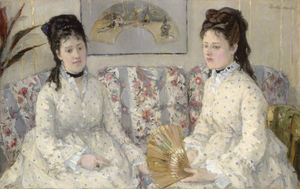Berthe Morisot Style and Technique
- Full Name:
- Berthe Marie Pauline Morisot
- Short Name:
- Morisot
- Alternative Names:
- Berthe Morisot
- Date of Birth:
- 14 Jan 1841
- Date of Death:
- 02 Mar 1895
- Focus:
- Paintings
- Mediums:
- Gouache, Oil, Watercolor
- Subjects:
- Figure, Landscapes
- Art Movement:
- Impressionism
- Hometown:
- Bourges, France
- Berthe Morisot Style and Technique Page's Content
- Introduction
- Style
- Method
Introduction
Berthe Morisot's style was consistently and typically Impressionist. Her paintings were full of color and light, and she perfectly mastered the technique of painting fleeting shades and shadows.
Despite her controversial painting style Morisot's work was feminine in character and her compositions focused on her family, friends and beloved village, Passy. Morisot loved to paint outside and she produced a plethora of works documenting her daughter Julie's childhood.
Berthe Morisot Style
Early years:
Morisot's work highly influenced by the types of artwork women were encouraged to produce; small compositions in pencil, gouache, or watercolor paints. Such works were created with small tins of watercolors that could easily be transported to different locations. This style of painting allowed the artist to paint both outside and whilst visiting friends. It was on her family's vacations to the countryside that Morisot completed many of her works.
Unlike her male contemporaries Morisot avoided painting nudes and erotic scenes. She was critically acclaimed for creating sincere images of nature that were rather derogatorily said to be due to her feminine superficiality. It was maintained that women painted only the frivolous splendor of nature because they were unable to perceive beyond a facade of beauty. However Morisot's use of incandescent tones and brush strokes on an unprimed canvas were not the follies of an inexperienced female painter, but rather the techniques that many of the Impressionist painters were using to create their impressive art work. Morisot's love of nature is obvious in her many resplendent paintings.
Later years:
In her later years Morisot continued creating Impressionist paintings that brought a new female perspective to the age old images of women sitting privately at their toilette. Whereas artists such as Manet and Renoir's works sexualized females Morisot perfectly captured the self consciousness of women as they are preparing for an evening out. Morisot's pictures are modest and reveal women who are not acting a part for men, but are instead focused only on themselves. Through her art she challenged accepted ideas of femininity and revealed the life of 19th-century women the way she experienced it.
The luminous quality of Morisot's paintings was highly praised for its faint progressions between the light and the dark shades, a skill she of course learnt from her teacher Corot. Berthe Morisot used faint, glistening strokes of paint that were lightly brushed onto the canvas and left a luminescent sheen and she always favored the use of watercolor paints and pastels.
Between 1880 and 1890 she experimented with lithography and dry point printmaking and in her later years Morisot chose to paint more lineal, ethereal forms, such as in The Cherry Pickers.
Berthe Morisot Method
Berthe Morisot's work is full of light, bright colors and the brush work is disjointed and varied. She accurately represented natural light by applying a large range of colors to the canvas with petite brush strokes. Although up close her paintings become indistinct, from a distance the works are unified with colors that merge together. Harsh lines are removed by a lack of contrasting tones.
Berthe Morisot's original style was seemingly unplanned - her models were outside and appear to have been caught going about their daily lives. The artist seemed to capture almost every moment of her daughter's growth in her paintings. Her fluid brush work and the natural light that floods her pictures only adds to the spontaneity of her work.

